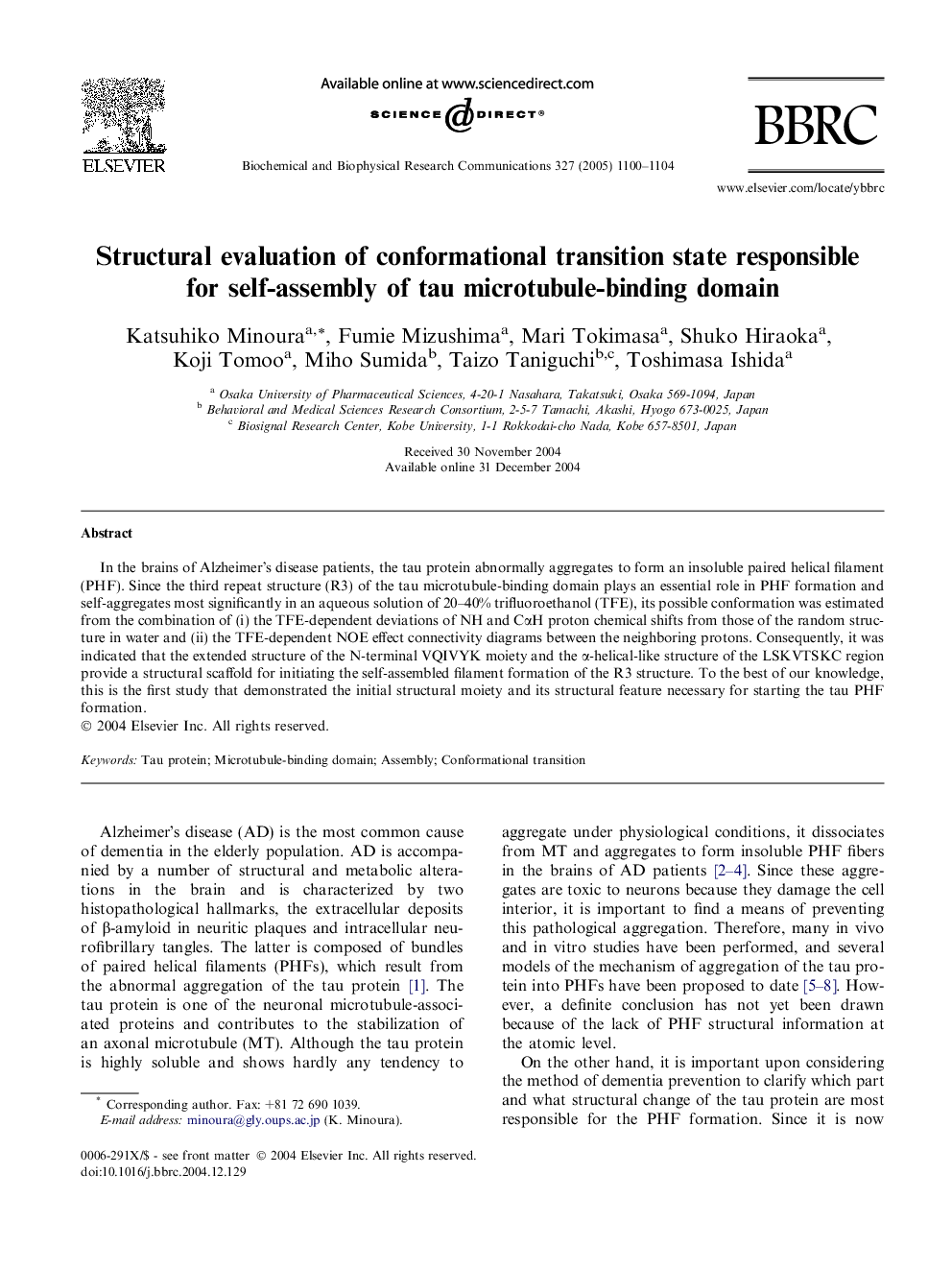| Article ID | Journal | Published Year | Pages | File Type |
|---|---|---|---|---|
| 10771285 | Biochemical and Biophysical Research Communications | 2005 | 5 Pages |
Abstract
In the brains of Alzheimer's disease patients, the tau protein abnormally aggregates to form an insoluble paired helical filament (PHF). Since the third repeat structure (R3) of the tau microtubule-binding domain plays an essential role in PHF formation and self-aggregates most significantly in an aqueous solution of 20-40% trifluoroethanol (TFE), its possible conformation was estimated from the combination of (i) the TFE-dependent deviations of NH and CαH proton chemical shifts from those of the random structure in water and (ii) the TFE-dependent NOE effect connectivity diagrams between the neighboring protons. Consequently, it was indicated that the extended structure of the N-terminal VQIVYK moiety and the α-helical-like structure of the LSKVTSKC region provide a structural scaffold for initiating the self-assembled filament formation of the R3 structure. To the best of our knowledge, this is the first study that demonstrated the initial structural moiety and its structural feature necessary for starting the tau PHF formation.
Related Topics
Life Sciences
Biochemistry, Genetics and Molecular Biology
Biochemistry
Authors
Katsuhiko Minoura, Fumie Mizushima, Mari Tokimasa, Shuko Hiraoka, Koji Tomoo, Miho Sumida, Taizo Taniguchi, Toshimasa Ishida,
